The nose plays a central role in facial symmetry and profile balance.
A Nose Area Consultation at Shellharbour Skin provides an opportunity to discuss concerns relating to the shape, contour, or overall appearance of the nose within a clinical, educational setting.
This consultation focuses on education, anatomical understanding, and safety planning.
It is not designed to promote a specific aesthetic service but to help you understand the factors contributing to visible nasal characteristics and to explore appropriate, evidence-based management pathways under medical supervision.
Understanding the Nose Area
Changes in the appearance of the nose may be influenced by a combination of genetic, structural, and environmental factors. Over time, natural tissue changes and facial ageing can subtly alter how the nose appears in proportion to surrounding features.
Contributing factors may include:
Genetic structure: Variations in cartilage, bone shape, and nasal bridge projection.
Soft-tissue movement: Over time, volume shifts may occur in the mid-face and nasal base areas.
Skin thickness and texture: These can affect how light and contour are perceived.
Trauma or injury: Prior impact to the nose may contribute to contour irregularities.
Natural ageing: Gradual soft-tissue and ligament changes can influence nasal appearance and facial balance.
Understanding these anatomical and physiological influences allows your clinician to discuss safe, appropriate options tailored to your individual characteristics.

Your Consultation at Shellharbour Skin
Your consultation is a detailed, discussion-based appointment that focuses on clinical education and individual assessment.
During your appointment, your clinician will:
- Review your medical history, allergies, and medications
- Conduct an assessment of nasal structure and facial proportion
- Discuss your specific observations or areas of concern
- Explain the biological and structural factors influencing nasal contour and balance
- Provide information on safe, evidence-based management pathways
- Outline potential risks, side effects, and safety considerations
- Offer the opportunity to ask any questions or raise concerns throughout the process
All consultations are conducted under medical supervision by qualified clinicians experienced in facial anatomy and aesthetic assessment.
No intervention is undertaken without a complete assessment, confirmed suitability, and a formal informed-consent process.
Clinical Discussion and Management Planning
Following your assessment, your clinician may discuss management pathways or non-surgical clinical options that are appropriate for your circumstances.
These discussions are educational in nature, focused on helping you understand safety, suitability, and timing considerations, rather than to advertise or suggest a particular procedure or outcome.
Topics that may be discussed include:
- Observation or monitoring where no intervention is required
- Clinical considerations relating to nasal contour or mid-face balance
- Review of surrounding areas (chin, cheeks, or mid-face) for proportional assessment
No intervention is performed without a full clinical evaluation, confirmed suitability, and informed consent. Your clinician will ensure all relevant information, including possible risks and aftercare requirements, is clearly explained before any decision is made.
Aftercare and Follow-Up
If a management pathway is undertaken, temporary effects such as mild swelling, redness, or tenderness may occur. These are generally short-lived and resolve within several days.
Your clinician will provide tailored aftercare guidance, which may include:
- Avoiding makeup and active skincare for 24–48 hours
- Limiting strenuous exercise and heat exposure
- Avoiding facial pressure, eyewear, or manipulation of the area
- Remaining upright for several hours after any intervention
- Attending follow-up appointments if advised
Written aftercare instructions and contact details will be provided for review if needed.
Risks and Considerations
All aesthetic and medical interventions carry potential risks.
Your clinician will discuss these thoroughly during your consultation and outline how they are managed.
Common temporary effects may include:
- Redness or tenderness at the site
- Mild swelling or bruising
- Localised discomfort
Less common or serious risks may include:
- Prolonged swelling or inflammation
- Skin discolouration or irregular texture
- Vascular compromise (reduced blood flow), which may cause skin or vision changes and requires urgent medical attention
- Infection or delayed healing
- Rare allergic or inflammatory responses
If you experience pain, discolouration, or visual disturbance following any clinical procedure, contact the clinic or seek emergency care immediately.
Cost and Planning
Consultation fees for nasal assessment depend on the time and complexity of your appointment.Your clinician will confirm all costs prior to your consultation. If a management pathway is discussed or recommended, it will be outlined and cost separately following your assessment.
No intervention is undertaken without prior informed consent.
Important Information
- Shellharbour Skin provides consultations for aesthetic assessment and management planning.
- We do not advertise or promote prescription-only medicines in accordance with AHPRA and TGA regulations.
- All services are performed only after a full medical assessment and informed-consent process.
- Suitability, recovery, and experience vary between individuals.
- Consultations are available to adults aged 18 years and over.
- This information is provided for educational and transparency purposes and should not replace individual medical advice.
Practitioner Transparency
Consultations and skin treatments at Shellharbour Skin are provided by a multidisciplinary clinical team:
Dermal Clinicians – qualified skin professionals who are not registered under AHPRA but hold tertiary qualifications in dermal science or dermal therapies. They provide skin treatments and consultations within their professional scope and under clinical supervision.
Registered Nurses – AHPRA-registered health practitioners who perform skin and aesthetic treatments within their clinical training and scope of practice.
Medical Practitioners – AHPRA-registered doctors experienced in skin health and aesthetic medicine who oversee and support all clinical services.
All treatments are undertaken within a medically supervised environment, ensuring that each patient pathway is reviewed for clinical suitability, safety, and evidence-based care.
You can verify registration for medical practitioners and nurses at ahpra.gov.au
Frequently Asked Questions
Can nose shape change with age?
Yes. Ageing affects the support structures of the nose, including cartilage, bone, and connective tissue – which may lead to slight drooping or broadening over time.
Loss of facial volume in surrounding areas, such as the mid-face or temples, can also alter how the nose appears in profile. These changes are normal and vary between individuals.
Can nose shape be improved without surgery?
In some cases, small changes in appearance may be addressed through non-surgical approaches, depending on anatomy and suitability. These are only discussed following a face-to-face medical assessment and under the supervision of a qualified prescriber.
Under AHPRA and TGA regulations, specific prescription-only products cannot be named or promoted publicly. If appropriate, your clinician can explain these options factually, including safety considerations and potential risks – not brand names or result claims.
Are non-surgical nose treatments safe?
Any medical or aesthetic procedure carries inherent risk, and the nasal area requires particular care due to its close connection with blood vessels and surrounding structures. Common temporary effects may include mild swelling or tenderness, while more serious risks – such as infection or vascular complications – are rare but possible. All discussions at Shellharbour Skin focus on safety, suitability, and informed decision-making.
What if I’ve had previous nasal surgery or trauma?
If you have a history of nasal trauma or prior surgery, your clinician will take this into account during assessment. Scar tissue, cartilage grafts, or structural changes can affect both aesthetic appearance and treatment planning. Additional imaging or referral to a specialist (e.g., ENT or plastic surgeon) may be recommended where clinically appropriate.
If you have a question, get in touch and one of our staff will be in touch shortly.




